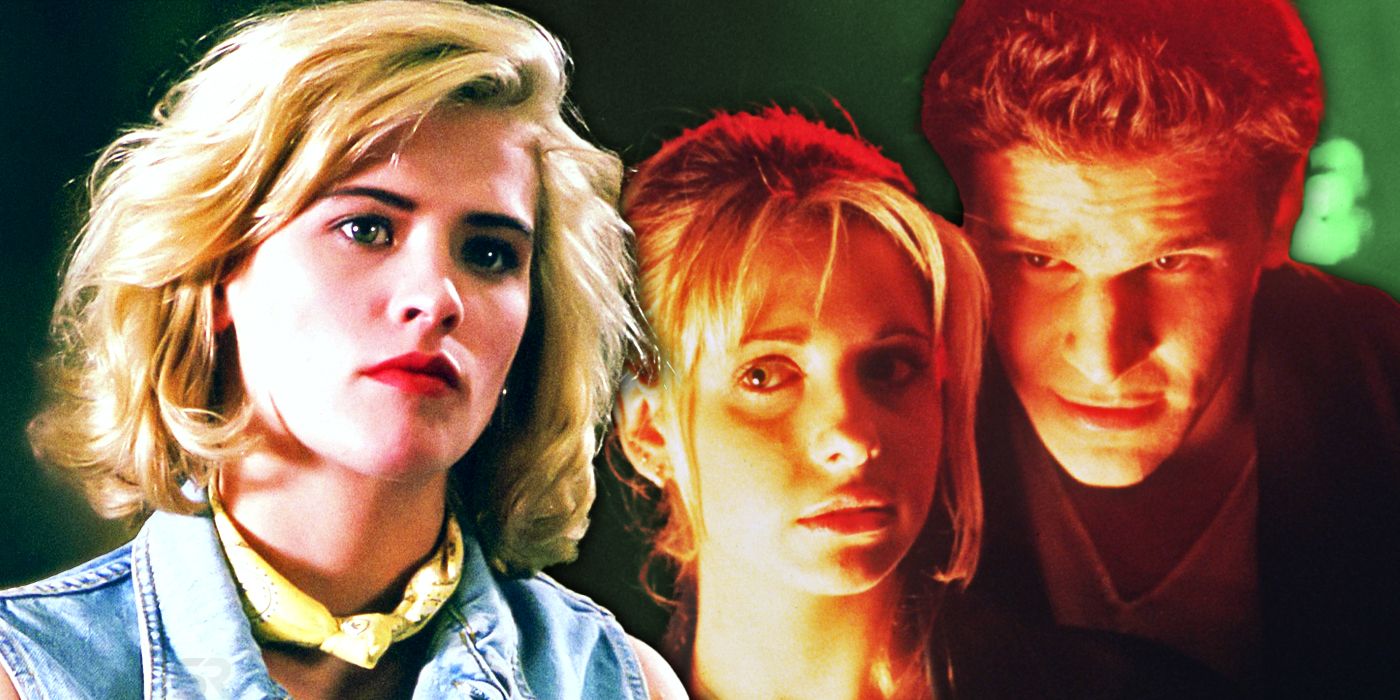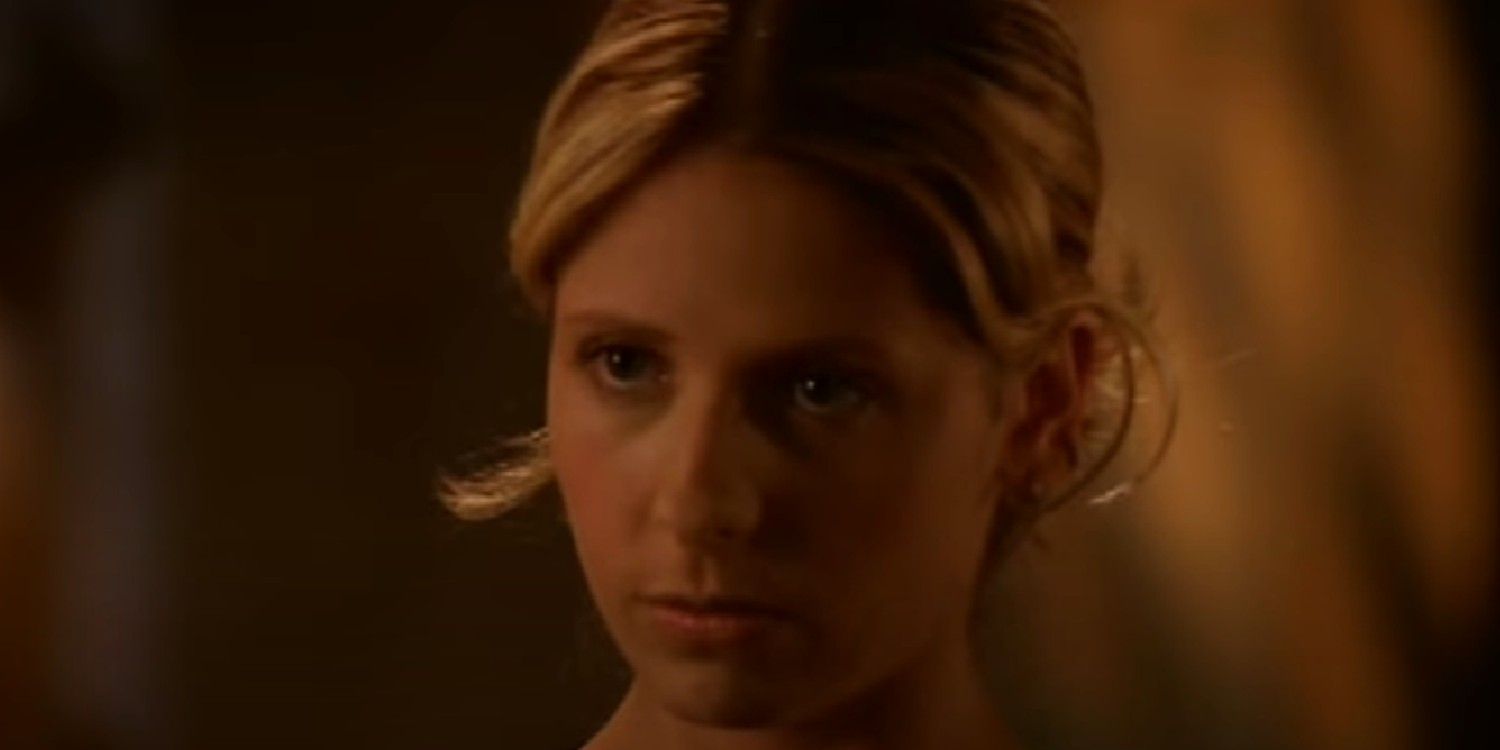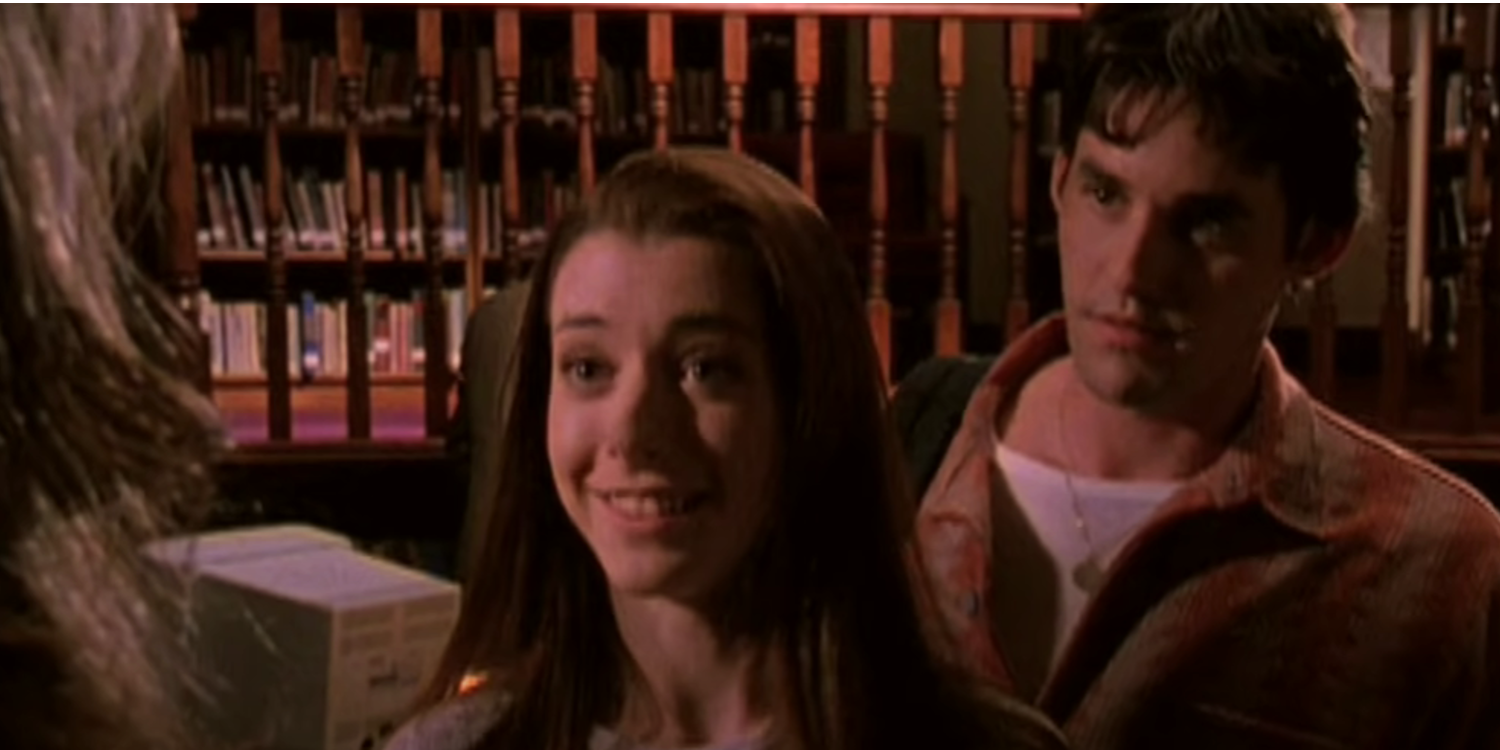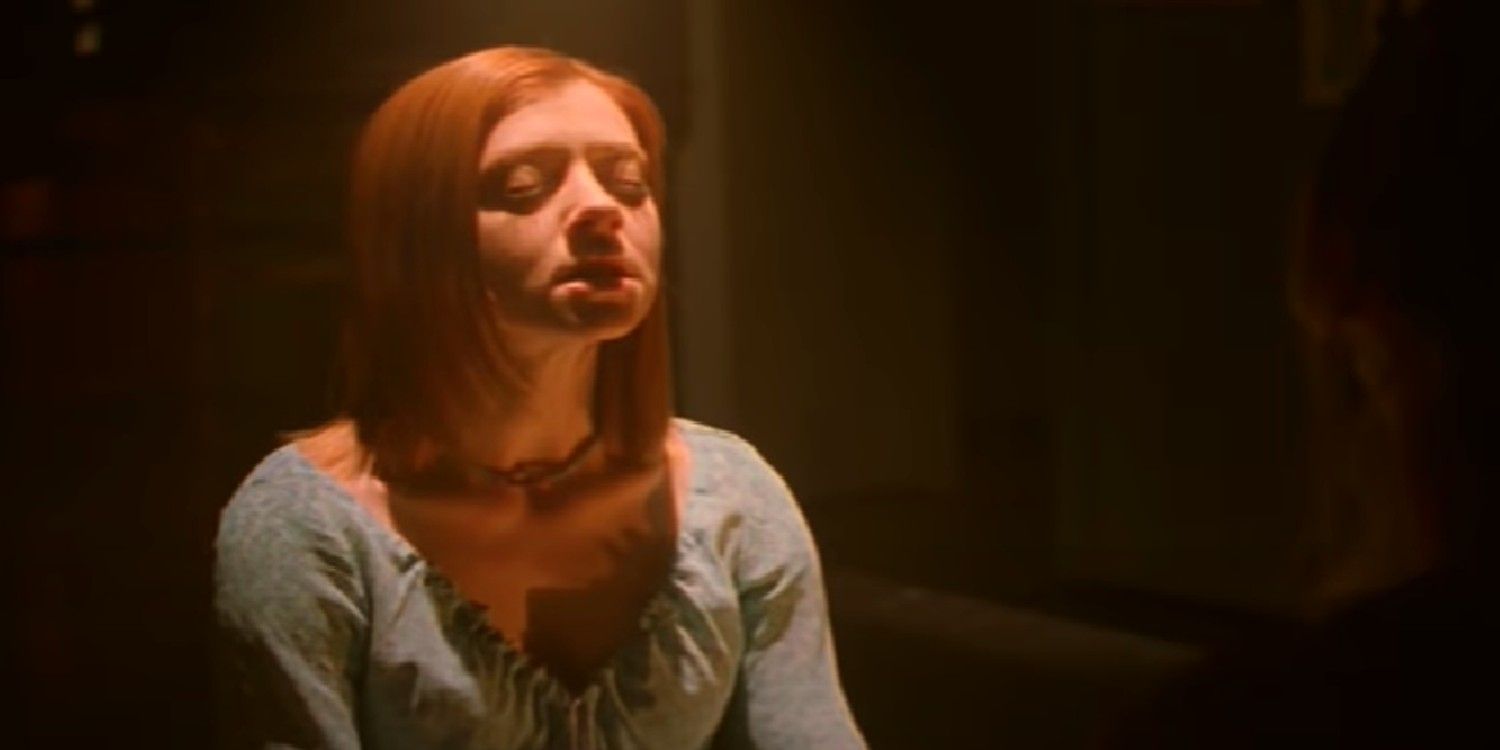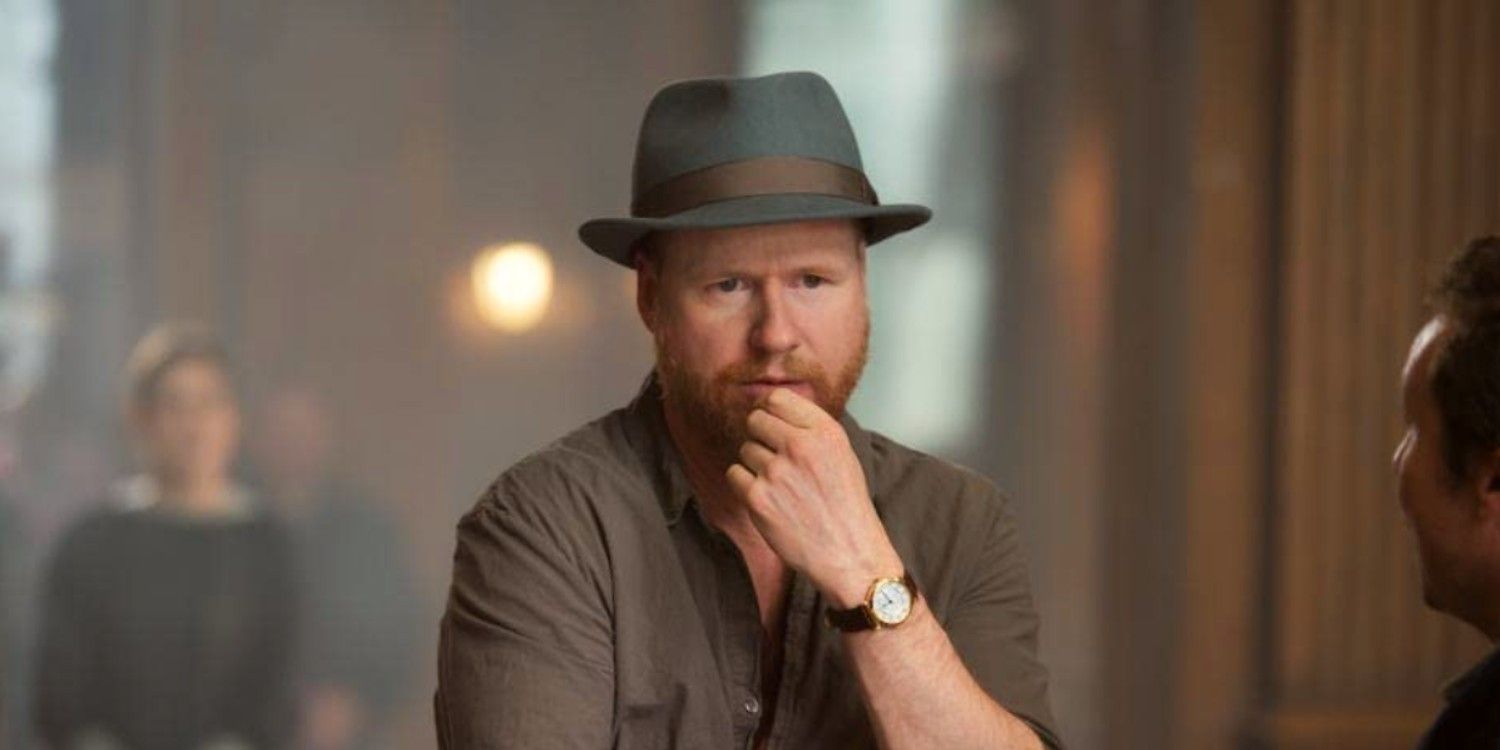Why the Buffy the Vampire Slayer movie failed when its TV show counterpart succeeded is a question with many factors in its answer. While some stories are victims of cultural taste and a lack of audience, the supernatural action-comedy movie currently sits far below its successor in terms of ratings. Normally, this might be due to a fundamentally different premise and concept between the show and the movie, but not in the case of Buffy the Vampire Slayer.
The reasons behind Buffy the Vampire Slayer’s success as a show instead of a movie are multifaceted. Essentially, they can be boiled down to differences in execution for a range of production elements, from character development and casting to the studio. After all, although Joss Whedon had a driving hand Buffy the Vampire Slayer, he was not the only one who helped determine their success.
Buffy’s Character Development Is Stronger in the Show than in the Movie
One of the most important parts of a story is naturally its protagonist, as they are generally responsible for carrying dramatic moments and often being the point-of-view character. As such, one of the strongest reasons for the Buffy the Vampire show’s strength over the movie was Buffy (Sarah Michelle Gellar and Kristy Swanson) herself. An immediate, striking difference between the two is that the show skips Buffy’s origin story, only referencing its implications in the episodes. This in-media-res approach gives Buffy a more interesting place to begin her story, because the show doesn’t need to waste time on exposition.
Instead, Buffy's relationship with her destiny and role can be explored more naturally as she handles and avoids her duties. As well as this, the Buffy the Vampire Slayer show introduces its lead after she’s already been slaying vampires. This gives her a sense of gravity that the purposefully-shallow Buffy at the beginning of the movie lacks, making her more engaging to watch.
Beyond this, Buffy’s character development is stronger in the show than in the movie, both individually and concerning the other characters. In the later Buffy the Vampire Slayer, Buffy must tackle themes such as grief, loss, duty, and the evolving nature of friendship over time. Meanwhile, the show largely focuses on Buffy’s destiny causing her to outgrow most of her friendships completely, which lacks the depth of many of the show’s character arcs.
Buffy’s supporting cast also forces her to grow in the show in a way that the movie does not, both through their dynamics and lack of diversity. While the Buffy The Vampire Slayer movie only provides Buffy with a mentor (Donald Sutherland) and love interest (Luke Pike), the show expands her group to a mentor, love interests, and several friends, some of whom aren’t human. This spurs stronger, more well-rounded development in both Buffy and her friends, making the show more engaging overall.
The Buffy the Vampire Slayer Show Has Better Casting and Supporting Characters
As well as Buffy’s supporting cast allowing her to better develop in the Buffy the Vampire show, the cast itself is much stronger, too. The skeletons of many of the beloved characters found in the show can be spotted in the movie, but they were fully developed after the 1992 film. A comedic every-man like Pike, Buffy’s movie love interest, can be seen in Xander (Nicholas Brendon), and Giles (Anthony Head) has all of the determination of Buffy’s movie mentor Merrick, but with far more charm.
These show characters are warmer and had more room for personal development than Buffy the Vampire Slayer's star Pike, who remained a love interest and point-of-view character throughout the movie with little other change. Meanwhile, Xander became a warrior and Willow (Alyson Hannigan) a witch, and their group grew to include other notable characters such as Cordelia (Charisma Carpenter), Oz (Seth Green), and Anya (Emma Caulfield).
Buffy’s casting with Sarah Michelle Gellar also brought longevity to the show that the movie lacked. While Kristy Swanson played the role well, her portrayal of the Slayer lacked the depth Gellar brought to the character. This is partially due to the movie’s story overall, but Gellar also deserves credit for bringing all of the energy and sarcasm Buffy the Vampire Slayer needed as well as a steel-edged, grounded sense of nuance, fleshing the heroine into a character who could carry a cult following for several years.
Buffy the Vampire Slayer is Better Suited To TV Than The Movies
The medium of both the Buffy the Vampire movie and the show added to their legacy - or lack thereof. For the 1992 version, a film’s runtime was too constraining for Buffy the Vampire Slayer to truly succeed. Considering that the movie had less than 90 minutes to establish the lore of the Slayer, cover Buffy’s acceptance of her destiny, and present her training with a convincing romance, it’s no surprise that the movie had too little time to make Buffy’s narrative as strong as it could be. As such, many elements of the humor, drama, and the many monsters that made the show so enduring couldn’t be included.
Meanwhile, Buffy the Vampire Slayer as a show had plenty of time to build its unique universe, giving it more staying power than the movie. The episodic format of the show allowed for more space for the comedy to shine, for more creative villains to challenge Buffy the Vampire Slayer's Scoobies, and fed into the monster-of-the-week format that allowed for long-term characterization and plots. As well as this, the show had time to create more interesting, shifting character dynamics that weren’t possible in the film, including Cordelia's growth and Spike’s (James Marsters) redemption.
Buffy’s Movie Was Hurt By Studio Changes… But The TV Show Wasn’t
Finally, one of the most important elements that plagued the film and supported the show was studio influence. Although Whedon did play a role in both projects, he had far less influence on the movie than the show. While fair criticism has been lobbed at Whedon’s work and the professional environment he creates, it is still true that his greater freedom on the Buffy the Vampire Slayer show helped make the show what it is.
Allegedly, 20th Century Fox removed many of the jokes and darker elements of Whedon’s original story from the movie. This supposedly included removing concepts that would later be at home in the Buffy the Vampire show, such as Caleb (Nathan Fillion). These missing elements certainly detracted from the personality that makes the show so successful.
There are many elements at play when considering what makes a story good, itself a highly subjective concept. But sometimes, a good story can be failed by its execution, as was the case of the Buffy the Vampire Slayer movie. As such, it’s a relief that Buffy’s story got a second chance in television, allowing it to become the cult classic it is today.

